The Cthulhu Mythos Megapack (40 Modern and Classic Lovecraftian Tales) Read online
Page 12
Not long afterward a steep descent in a long, low, doorless, and peculiarly sculptureless corridor led us to believe that we were approaching the tunnel mouth at last. We had passed two more penguins, and heard others immediately ahead. Then the corridor ended in a prodigious open space which made us gasp involuntarily—a perfect inverted hemisphere, obviously deep underground; fully a hundred feet in diameter and fifty feet high, with low archways opening around all parts of the circumference but one, and that one yawning cavernously with a black, arched aperture which broke the symmetry of the vault to a height of nearly fifteen feet. It was the entrance to the great abyss.
In this vast hemisphere, whose concave roof was impressively though decadently carved to a likeness of the primordial celestial dome, a few albino penguins waddled—aliens there, but indifferent and unseeing. The black tunnel yawned indefinitely off at a steep, descending grade, its aperture adorned with grotesquely chiseled jambs and lintel. From that cryptical mouth we fancied a current of slightly warmer air, and perhaps even a suspicion of vapor proceeded; and we wondered what living entities other than penguins the limitless void below, and the contiguous honeycombings of the land and the titan mountains, might conceal. We wondered, too, whether the trace of mountaintop smoke at first suspected by poor Lake, as well as the odd haze we had ourselves perceived around the rampart-crowned peak, might not be caused by the tortuous-channeled rising of some such vapor from the unfathomed regions of earth’s core.
Entering the tunnel, we saw that its outline was—at least at the start—about fifteen feet each way—sides, floor, and arched roof composed of the usual megalithic masonry. The sides were sparsely decorated with cartouches of conventional designs in a late, decadent style; and all the construction and carving were marvelously well-preserved. The floor was quite clear, except for a slight detritus bearing outgoing penguin tracks and the inward tracks of these others. The farther one advanced, the warmer it became; so that we were soon unbuttoning our heavy garments. We wondered whether there were any actually igneous manifestations below, and whether the waters of that sunless sea were hot. Alter a short distance the masonry gave place to solid rock, though the tunnel kept the same proportions and presented the same aspect of carved regularity. Occasionally its varying grade became so steep that grooves were cut in the floor. Several times we noted the mouths of small lateral galleries not recorded in our diagrams; none of them such as to complicate the problem of our return, and all of them welcome as possible refuges in case we met unwelcome entities on their way back from the abyss. The nameless scent of such things was very distinct. Doubtless it was suicidally foolish to venture into that tunnel under the known conditions, but the lure of the unplumbed is stronger in certain persons than most suspect—indeed, it was just such a lure which had brought us to this unearthly polar waste in the first place. We saw several penguins as we passed along, and speculated on the distance we would have to traverse. The carvings had led us to expect a steep downhill walk of about a mile to the abyss, but our previous wanderings had shown us that matters of scale were not wholly to be depended on.
Alter about a quarter of a mile that nameless scent became greatly accentuated, and we kept very careful track of the various lateral openings we passed. There was no visible vapor as at the mouth, but this was doubtless due to the lack of contrasting cooler air. The temperature was rapidly ascending, and we were not surprised to come upon a careless heap of material shudderingly familiar to us. It was composed of furs and tent cloth taken from Lake’s camp, and we did not pause to study the bizarre forms into which the fabrics had been slashed. Slightly beyond this point we noticed a decided increase in the size and number of the side galleries, and concluded that the densely honeycombed region beneath the higher foothills must now have been reached. The nameless scent was now curiously mixed with another and scarcely less offensive odor—of what nature we could not guess, though we thought of decaying organisms and perhaps unknown subterranean fungi. Then came a startling expansion of the tunnel for which the carvings had not prepared us—a broadening and rising into a lofty, natural-looking elliptical cavern with a level floor, some seventy-five feet long and fifty broad, and with many immense side passages leading away into cryptical darkness.
Though this cavern was natural in appearance, an inspection with both torches suggested that it had been formed by the artificial destruction of several walls between adjacent honeycombings. The walls were rough, and the high, vaulted roof was thick with stalactites; but the solid rock floor had been smoothed off, and was free from all debris, detritus, or even dust to a positively abnormal extent. Except for the avenue through which we had come, this was true of the floors of all the great galleries opening off from it; and the singularity of the condition was such as to set us vainly puzzling. The curious new fetor which had supplemented the nameless scent was excessively pungent here; so much so that it destroyed all trace of the other. Something about this whole place, with its polished and almost glistening floor, struck us as more vaguely baffling and horrible than any of the monstrous things we had previously encountered.
The regularity of the passage immediately ahead, as well as the larger proportion of penguin-droppings there, prevented all confusion as to the right course amidst this plethora of equally great cave mouths. Nevertheless we resolved to resume our paper trailblazing if any further complexity should develop; for dust tracks, of course, could no longer be expected. Upon resuming our direct progress we cast a beam of torchlight over the tunnel walls—and stopped short in amazement at the supremely radical change which had come over the carvings in this part of the passage. We realized, of course, the great decadence of the Old Ones’ sculpture at the time of the tunneling, and had indeed noticed the inferior workmanship of the arabesques in the stretches behind us. But now, in this deeper section beyond the cavern, there was a sudden difference wholly transcending explanation—a difference in basic nature as well as in mere quality, and involving so profound and calamitous a degradation of skill that nothing in the hitherto observed rate of decline could have led one to expect it.
This new and degenerate work was coarse, bold, and wholly lacking in delicacy of detail. It was countersunk with exaggerated depth in bands following the same general line as the sparse cartouches of the earlier sections, but the height of the reliefs did not reach the level of the general surface. Danforth had the idea that it was a second carving—a sort of palimpsest formed after the obliteration of a previous design. In nature it was wholly decorative and conventional, and consisted of crude spirals and angles roughly following the quintile mathematical tradition of the Old Ones, yet seemingly more like a parody than a perpetuation of that tradition. We could not get it out of our minds that some subtly but profoundly alien element had been added to the aesthetic feeling behind the technique—an alien element, Danforth guessed, that was responsible for the laborious substitution. It was like, yet disturbingly unlike, what we had come to recognize as the Old Ones’ art; and I was persistently reminded of such hybrid things as the ungainly Palmyrene sculptures fashioned in the Roman manner. That others had recently noticed this belt of carving was hinted by the presence of a used flashlight battery on the floor in front of one of the most characteristic cartouches.
Since we could not afford to spend any considerable time in study, we resumed our advance after a cursory look; though frequently casting beams over the walls to see if any further decorative changes developed. Nothing of the sort was perceived, though the carvings were in places rather sparse because of the numerous mouths of smooth-floored lateral tunnels. We saw and heard fewer penguins, but thought we caught a vague suspicion of an infinitely distant chorus of them somewhere deep within the earth. The new and inexplicable odor was abominably strong, and we could detect scarcely a sign of that other nameless scent. Puffs of visible vapor ahead bespoke increasing contrasts in temperature, and the relative nearness of the sunless sea cliffs of the great abyss. Then, quite unexpectedly, we saw cert
ain obstructions on the polished floor ahead—obstructions which were quite definitely not penguins—and turned on our second torch after making sure that the objects were quite stationary.
XI
Still another time have I come to a place where it is very difficult to proceed. I ought to be hardened by this stage; but there are some experiences and intimations which scar too deeply to permit of healing, and leave only such an added sensitiveness that memory reinspires all the original horror. We saw, as I have said, certain obstructions on the polished floor ahead; and I may add that our nostrils were assailed almost simultaneously by a very curious intensification of the strange prevailing fetor, now quite plainly mixed with the nameless stench of those others which had gone before. The light of the second torch left no doubt of what the obstructions were, and we dared approach them only because we could see, even from a distance, that they were quite as past all harming power as had been the six similar specimens unearthed from the monstrous star-mounded graves at poor Lake’s camp.
They were, indeed, as lacking—in completeness as most of those we had unearthed—though it grew plain from the thick, dark green pool gathering around them that their incompleteness was of infinitely greater recency. There seemed to be only four of them, whereas Lake’s bulletins would have suggested no less than eight as forming the group which had preceded us. To find them in this state was wholly unexpected, and we wondered what sort of monstrous struggle had occurred down here in the dark.
Penguins, attacked in a body, retaliate savagely with their beaks, and our ears now made certain the existence of a rookery far beyond. Had those others disturbed such a place and aroused murderous pursuit? The obstructions did not suggest it, for penguins’ beaks against the tough tissues Lake had dissected could hardly account for the terrible damage our approaching glance was beginning to make out. Besides, the huge blind birds we had seen appeared to be singularly peaceful.
Had there, then, been a struggle among those others, and were the absent four responsible? If so, where were they? Were they close at hand and likely to form an immediate menace to us? We glanced anxiously at some of the smooth-floored lateral passages as we continued our slow and frankly reluctant approach. Whatever the conflict was, it had clearly been that which had frightened the penguins into their unaccustomed wandering. It must, then, have arisen near that faintly heard rookery in the incalculable gulf beyond, since there were no signs that any birds had normally dwelt here. Perhaps, we reflected, there had been a hideous running fight, with the weaker party seeking to get back to the cached sledges when their pursuers finished them. One could picture the demoniac fray between namelessly monstrous entities as it surged out of the black abyss with great clouds of frantic penguins squawking and scurrying ahead.
I say that we approached those sprawling and incomplete obstructions slowly and reluctantly. Would to Heaven we had never approached them at all, but had run back at top speed out of that blasphemous tunnel with the greasily smooth floors and the degenerate murals aping and mocking the things they had superseded—run back, before we had seen what we did see, and before our minds were burned with something which will never let us breathe easily again!
Both of our torches were turned on the prostrate objects, so that we soon realized the dominant factor in their incompleteness. Mauled, compressed, twisted, and ruptured as they were, their chief common injury was total decapitation. From each one the tentacled starfish head had been removed; and as we drew near we saw that the manner of removal looked more like some hellish tearing or suction than like any ordinary form of cleavage. Their noisome dark-green ichor formed a large, spreading pool; but its stench was half overshadowed by the newer and stranger stench, here more pungent than at any other point along our route. Only when we had come very close to the sprawling obstructions could we trace that second, unexplainable fetor to any immediate source—and the instant we did so Danforth, remembering certain very vivid sculptures of the Old Ones’ history in the Permian Age one hundred and fifty million years ago, gave vent to a nerve-tortured cry which echoed hysterically through that vaulted and archaic passage with the evil, palimpsest carvings.
I came only just short of echoing his cry myself; for I had seen those primal sculptures, too, and had shudderingly admired the way the nameless artist had suggested that hideous slime coating found on certain incomplete and prostrate Old Ones—those whom the frightful Shoggoths had characteristically slain and sucked to a ghastly headlessness in the great war of resubjugation. They were infamous, nightmare sculptures even when telling of age-old, bygone things; for Shoggoths and their work ought not to be seen by human beings or portrayed by any beings. The mad author of the Necronomicon had nervously tried to swear that none had been bred on this planet, and that only drugged dreamers had even conceived them. Formless protoplasm able to mock and reflect all forms and organs and processes—viscous agglutinations of bubbling cells—rubbery fifteen-foot spheroids infinitely plastic and ductile—slaves of suggestion, builders of cities—more and more sullen, more and more intelligent, more and more amphibious, more and more imitative! Great God! What madness made even those blasphemous Old Ones willing to use and carve such things?
And now, when Danforth and I saw the freshly glistening and reflectively iridescent black slime which clung thickly to those headless bodies and stank obscenely with that new, unknown odor whose cause only a diseased fancy could envisage—clung to those bodies and sparkled less voluminously on a smooth part of the accursedly resculptured wall in a series of grouped dots—we understood the quality of cosmic fear to its uttermost depths. It was not fear of those four missing others—for all too well did we suspect they would do no harm again. Poor devils! After all, they were not evil things of their kind. They were the men of another age and another order of being. Nature had played a hellish jest on them—as it will on any others that human madness, callousness, or cruelty may hereafter dig up in that hideously dead or sleeping polar waste—and this was their tragic homecoming. They had not been even savages—for what indeed had they done? That awful awakening in the cold of an unknown epoch—perhaps an attack by the furry, frantically barking quadrupeds, and a dazed defense against them and the equally frantic white simians with the queer wrappings and paraphernalia …poor Lake, poor Gedney…and poor Old Ones! Scientists to the last—what had they done that we would not have done in their place? God, what intelligence and persistence! What a facing of the incredible, just as those carven kinsmen and forbears had faced things only a little less incredible! Radiates, vegetables, monstrosities, star spawn—whatever they had been, they were men!
They had crossed the icy peaks on whose templed slopes they had once worshipped and roamed among the tree ferns. They had found their dead city brooding under its curse, and had read its carven latter days as we had done. They had tried to reach their living fellows in fabled depths of blackness they had never seen—and what had they found? All this flashed in unison through the thoughts of Danforth and me as we looked from those headless, slime-coated shapes to the loathsome palimpsest sculptures and the diabolical dot groups of fresh slime on the wall beside them—looked and understood what must have triumphed and survived down there in the Cyclopean water city of that nighted, penguin-fringed abyss, whence even now a sinister curling mist had begun to belch pallidly as if in answer to Danforth’s hysterical scream.
The shock of recognizing that monstrous slime and headlessness had frozen us into mute, motionless statues, and it is only through later conversations that we have learned of the complete identity of our thoughts at that moment. It seemed aeons that we stood there, but actually it could not have been more than ten or fifteen seconds. That hateful, pallid mist curled forward as if veritably driven by some remoter advancing bulk—and then came a sound which upset much of what we had just decided, and in so doing broke the spell and enabled us to run like mad past squawking, confused penguins over our former trail back to the city, along ice-sunken megalithic corridors to th
e great open circle, and up that archaic spiral ramp in a frenzied, automatic plunge for the sane outer air and light of day.
The new sound, as I have intimated, upset much that we had decided; because it was what poor Lake’s dissection had led us to attribute to those we had judged dead. It was, Danforth later told me, precisely what he had caught in infinitely muffled form when at that spot beyond the alley corner above the glacial level; and it certainly had a shocking resemblance to the wind pipings we had both heard around the lofty mountain caves. At the risk of seeming puerile I will add another thing, too, if only because of the surprising way Danforth’s impressions chimed with mine. Of course common reading is what prepared us both to make the interpretation, though Danforth has hinted at queer notions about unsuspected and forbidden sources to which Poe may have had access when writing his Arthur Gordon Pym a century ago. It will be remembered that in that fantastic tale there is a word of unknown but terrible and prodigious significance connected with the Antarctic and screamed eternally by the gigantic spectrally snowy birds of that malign region’s core. “Tekeli-li! Tekeli-li!” That, I may admit, is exactly what we thought we heard conveyed by that sudden sound behind the advancing white mist—that insidious musical piping over a singularly wide range.
We were in full flight before three notes or syllables had been uttered, though we knew that the swiftness of the Old Ones would enable any scream-roused and pursuing survivor of the slaughter to overtake us in a moment if it really wished to do so. We had a vague hope, however, that nonaggressive conduct and a display of kindred reason might cause such a being to spare us in case of capture, if only from scientific curiosity. After all, if such an one had nothing to fear for itself, it would have no motive in harming us. Concealment being futile at this juncture, we used our torch for a running glance behind, and perceived that the mist was thinning. Would we see, at last, a complete and living specimen of those others? Again came that insidious musical piping—“Tekeli-li! Tekeli-li!” Then, noting that we were actually gaining on our pursuer, it occurred to us that the entity might be wounded. We could take no chances, however, since it was very obviously approaching in answer to Danforth’s scream, rather than in flight from any other entity. The timing was too close to admit of doubt. Of the whereabouts of that less conceivable and less mentionable nightmare—that fetid, unglimpsed mountain of slime-spewing protoplasm whose race had conquered the abyss and sent land pioneers to recarve and squirm through the burrows of the hills—we could form no guess; and it cost us a genuine pang to leave this probably crippled Old One—perhaps a lone survivor—to the peril of recapture and a nameless fate.

![[What Might Have Been 02] Alternate Heroes Read online](http://i1.bookreadfree.com/27/what_might_have_been_02_alternate_heroes_preview.jpg) [What Might Have Been 02] Alternate Heroes
[What Might Have Been 02] Alternate Heroes![[What Might Have Been 01] Alternate Empires Read online](http://i1.bookreadfree.com/01/what_might_have_been_01_alternate_empires_preview.jpg) [What Might Have Been 01] Alternate Empires
[What Might Have Been 01] Alternate Empires SEDUCTIVE: A Contemporary Romance Anthology
SEDUCTIVE: A Contemporary Romance Anthology A Year of Love
A Year of Love Super Daddies: A Naughty Nerdy Romantic Comedy Anthology
Super Daddies: A Naughty Nerdy Romantic Comedy Anthology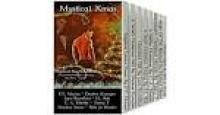 Mystical Xmas: Paranormal Romance Anthology Box Set
Mystical Xmas: Paranormal Romance Anthology Box Set![[What Might Have Been 04] Alternate Americas Read online](http://i1.bookreadfree.com/06/what_might_have_been_04_alternate_americas_preview.jpg) [What Might Have Been 04] Alternate Americas
[What Might Have Been 04] Alternate Americas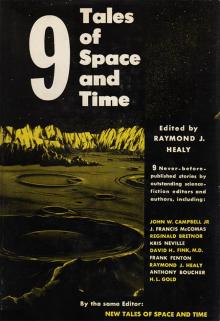 9 Tales of Space and Time
9 Tales of Space and Time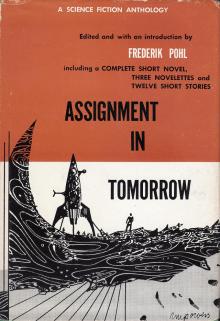 Assignment in Tomorrow
Assignment in Tomorrow![[What Might Have Been 03] Alternate Wars Read online](http://i1.bookreadfree.com/i/03/16/what_might_have_been_03_alternate_wars_preview.jpg) [What Might Have Been 03] Alternate Wars
[What Might Have Been 03] Alternate Wars The Complete Dangerous Visions
The Complete Dangerous Visions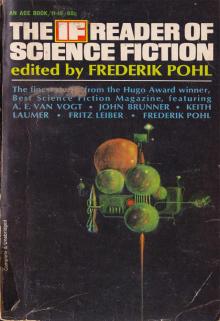 The IF Reader of Science Fiction
The IF Reader of Science Fiction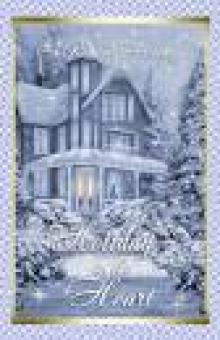 Holiday in the Heart
Holiday in the Heart Torquere Press Sips and Shots
Torquere Press Sips and Shots Possess: An Alpha Anthology
Possess: An Alpha Anthology Beyond Control
Beyond Control Bad Boys Under the Mistletoe: A Begging for Bad Boys Collection
Bad Boys Under the Mistletoe: A Begging for Bad Boys Collection Hugo Awards: The Short Stories (Volume 3)
Hugo Awards: The Short Stories (Volume 3) The Second IF Reader of Science Fiction
The Second IF Reader of Science Fiction Astounding Science Fiction Stories Vol 1
Astounding Science Fiction Stories Vol 1 What Happens Over Spring Break: A Short Story Anthology
What Happens Over Spring Break: A Short Story Anthology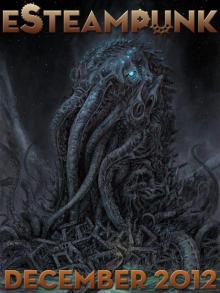 eSteampunk Vol. 01 No. 02
eSteampunk Vol. 01 No. 02 SHADOWRUN: Spells and Chrome (shadowrun)
SHADOWRUN: Spells and Chrome (shadowrun) Dark Tales
Dark Tales Getting Schooled (Craving #9)
Getting Schooled (Craving #9) The Hellfire Book of Beltane Volume One
The Hellfire Book of Beltane Volume One The Alpha's
The Alpha's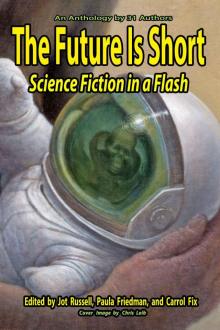 The Future Is Short
The Future Is Short From the Heart: A Valentine's Day Anthology
From the Heart: A Valentine's Day Anthology Reckless: A Bad Boyz Anthology
Reckless: A Bad Boyz Anthology LOL #3 Romantic Comedy Anthology
LOL #3 Romantic Comedy Anthology A Christmas Seduction: A Regency Anthology
A Christmas Seduction: A Regency Anthology All a Cowboy Wants for Christmas
All a Cowboy Wants for Christmas Hugo Awards: The Short Stories (Volume 2)
Hugo Awards: The Short Stories (Volume 2) The Golden Age of Science Fiction Novels Vol 01
The Golden Age of Science Fiction Novels Vol 01 The Sirens of SaSS Anthology
The Sirens of SaSS Anthology Mistletoe & Kisses
Mistletoe & Kisses Explorers of Space
Explorers of Space Time Travel Omnibus Volume 2
Time Travel Omnibus Volume 2 Dead Science: A Zombie Anthology
Dead Science: A Zombie Anthology Beer Goggles Anthology
Beer Goggles Anthology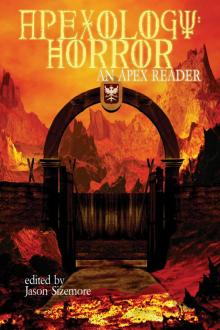 Apexology: Horror
Apexology: Horror Heat Wave: A Summer Loving Anthology
Heat Wave: A Summer Loving Anthology Fall in Love
Fall in Love Love Under the Mistletoe
Love Under the Mistletoe Hook & Ladder 69: Eighteen Authors...One Sexy Firehouse.
Hook & Ladder 69: Eighteen Authors...One Sexy Firehouse. LOL #2 Romantic Comedy Anthology - Volume 2 - Even More All-New Romance Stories by Bestselling Authors (LOL Romantic Comedy Anthology #2)
LOL #2 Romantic Comedy Anthology - Volume 2 - Even More All-New Romance Stories by Bestselling Authors (LOL Romantic Comedy Anthology #2) Off the Beaten Path: Eight Tales of the Paranormal
Off the Beaten Path: Eight Tales of the Paranormal![Best New Zombie [3] - Best New Zombie Tales, Vol. 3 Read online](http://i1.bookreadfree.com/i/03/25/best_new_zombie_3_-_best_new_zombie_tales_vol_3_preview.jpg) Best New Zombie [3] - Best New Zombie Tales, Vol. 3
Best New Zombie [3] - Best New Zombie Tales, Vol. 3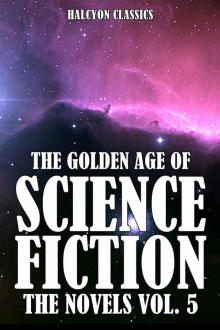 The Golden Age of Science Fiction Novels Vol 05
The Golden Age of Science Fiction Novels Vol 05 Alphas of Sin
Alphas of Sin Halloween Spirits: 11 Tales for the Darkest Night
Halloween Spirits: 11 Tales for the Darkest Night Night Shift 2
Night Shift 2 Ellora's Cavemen: Jewels of the Nile II
Ellora's Cavemen: Jewels of the Nile II Hot for the Holidays (21 Holiday Short Stories): A Collection of Naughty and Nice Holiday Romances
Hot for the Holidays (21 Holiday Short Stories): A Collection of Naughty and Nice Holiday Romances Of Heaven and Hell
Of Heaven and Hell 12 Christmas Romances To Melt Your Heart
12 Christmas Romances To Melt Your Heart '90s Playlist (Romance Rewind #1)
'90s Playlist (Romance Rewind #1) Bleed Blue 69: Twenty-Five Authors…One Sexy Police Station
Bleed Blue 69: Twenty-Five Authors…One Sexy Police Station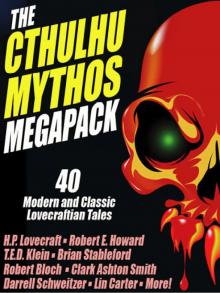 The Cthulhu Mythos Megapack (40 Modern and Classic Lovecraftian Tales)
The Cthulhu Mythos Megapack (40 Modern and Classic Lovecraftian Tales)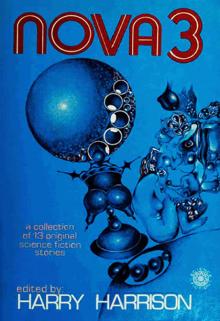 Nova 3
Nova 3 Unbroken: 13 Stories Starring Disabled Teens
Unbroken: 13 Stories Starring Disabled Teens Dead Men (and Women) Walking
Dead Men (and Women) Walking Sweet Seduction
Sweet Seduction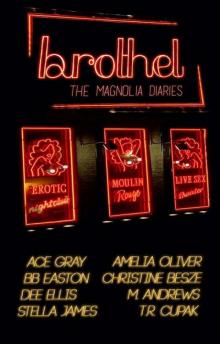 Brothel: The Magnolia Diaries
Brothel: The Magnolia Diaries Rogues (A Boys Behaving Badly Anthology #1)
Rogues (A Boys Behaving Badly Anthology #1) Best New Zombie Tales, Vol. 3
Best New Zombie Tales, Vol. 3![The Hellfire Bo [1] - The Hellfire Book of Beltane Volume One Read online](http://i1.bookreadfree.com/i1/04/06/the_hellfire_bo_1_-_the_hellfire_book_of_beltane_volume_one_preview.jpg) The Hellfire Bo [1] - The Hellfire Book of Beltane Volume One
The Hellfire Bo [1] - The Hellfire Book of Beltane Volume One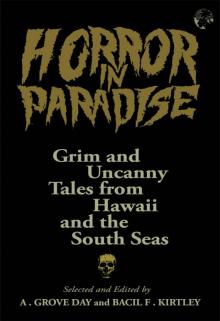 Horror in Paradise
Horror in Paradise Time Travel Omnibus Volume 1
Time Travel Omnibus Volume 1 More Than Words: Stories of Courage
More Than Words: Stories of Courage River Walk: Ten Kinky Collaborations
River Walk: Ten Kinky Collaborations F*cking Awkward
F*cking Awkward Hearts of England
Hearts of England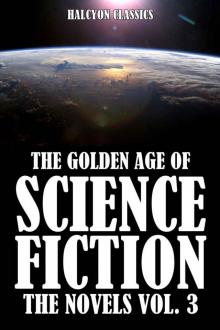 The Golden Age of Science Fiction Novels Vol 03
The Golden Age of Science Fiction Novels Vol 03 Drunk in Love
Drunk in Love Up and Coming: Stories by the 2016 Campbell-Eligible Authors
Up and Coming: Stories by the 2016 Campbell-Eligible Authors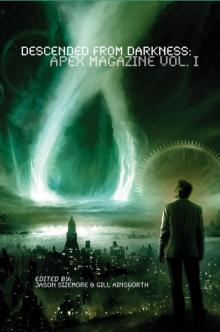 Descended from Darkness: Apex Magazine Vol I
Descended from Darkness: Apex Magazine Vol I Dominant Persuasions Anthology: 12 Tales of D/s, Where Mastery Meets Passion
Dominant Persuasions Anthology: 12 Tales of D/s, Where Mastery Meets Passion The Golden Age of Science Fiction Novels Vol 04
The Golden Age of Science Fiction Novels Vol 04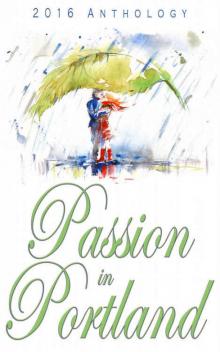 Passion in Portland 2016 Anthology
Passion in Portland 2016 Anthology Men of Mayhem
Men of Mayhem The Dirty Anthology
The Dirty Anthology Hot For Teacher
Hot For Teacher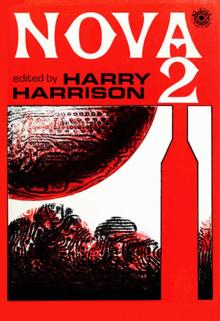 Nova 2
Nova 2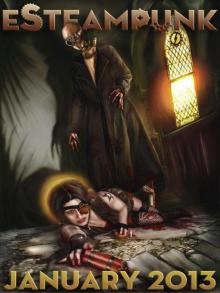 eSteampunk Vol. 01 No. 03
eSteampunk Vol. 01 No. 03 Afternoon Tea Mysteries Vol Three
Afternoon Tea Mysteries Vol Three Romance in the Rain
Romance in the Rain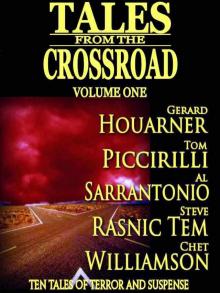 Tales From the Crossroad Volume 1
Tales From the Crossroad Volume 1 A Very Alpha Christmas
A Very Alpha Christmas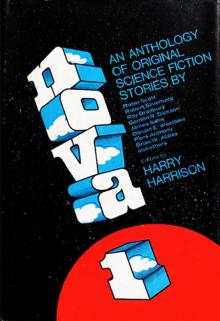 Nova 1
Nova 1 Once: A Collection of Sinfully Sexy and Twisted Tales
Once: A Collection of Sinfully Sexy and Twisted Tales Nuts About You: A Testicular Cancer Anthology
Nuts About You: A Testicular Cancer Anthology From the Street (shadowrun stories)
From the Street (shadowrun stories) Box of 1Night Stands: 21 Sizzling Nights
Box of 1Night Stands: 21 Sizzling Nights Descended from Darkness: Vol II
Descended from Darkness: Vol II Pink Shades of Words: Walk 2016
Pink Shades of Words: Walk 2016 The Art of Taking Chances
The Art of Taking Chances The Butterfly Box_A SASS Anthology
The Butterfly Box_A SASS Anthology Harlan County Horrors
Harlan County Horrors![Afternoon Tea Mysteries [Vol Three] Read online](http://i1.bookreadfree.com/i2/04/12/afternoon_tea_mysteries_vol_three_preview.jpg) Afternoon Tea Mysteries [Vol Three]
Afternoon Tea Mysteries [Vol Three]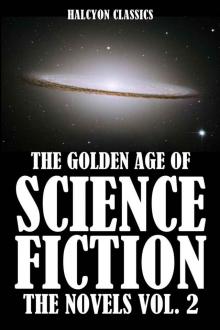 The Golden Age of Science Fiction Novels Vol 02
The Golden Age of Science Fiction Novels Vol 02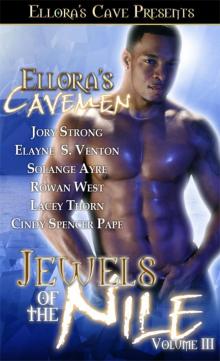 Ellora's Cavemen: Jewels of the Nile III
Ellora's Cavemen: Jewels of the Nile III